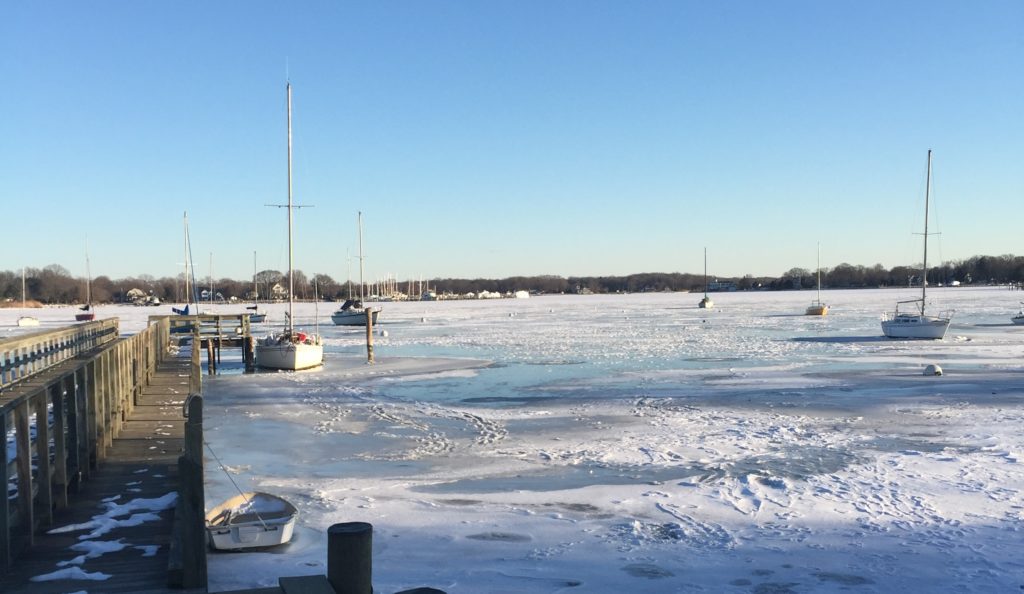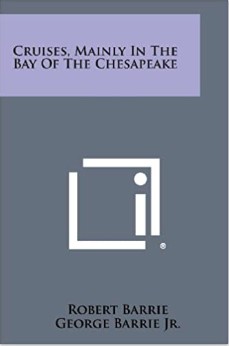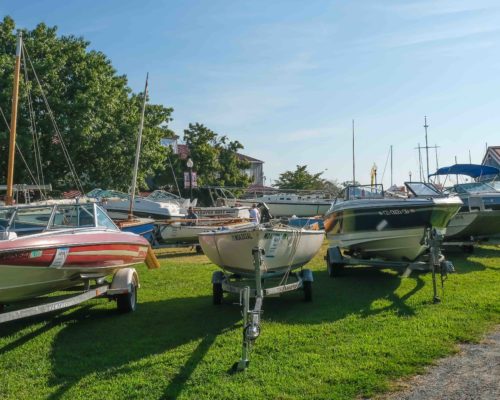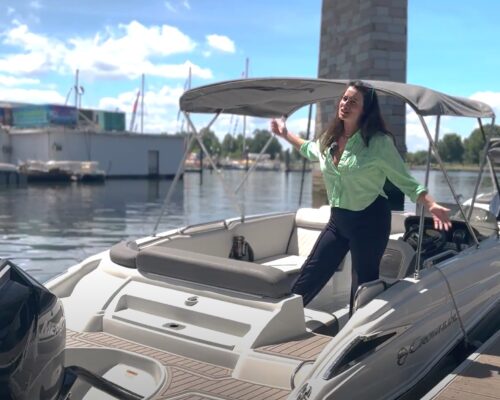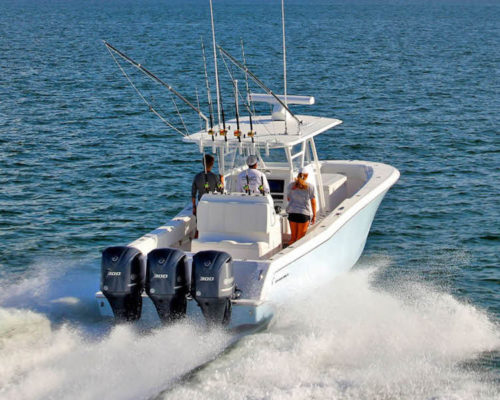Or: How to Navigate Your Way Through Winter Without A Boat
Ah, here’s winter upon us already. Time to tuck our boats into the yard and say goodbye to weekend cruises, day sails and dock parties for months and months. What do we do now? Sigh. Cheer up, I say; we could be living in Minnesota, where we wouldn’t even be able to find our boats until June. Here on the Chesapeake, on the other hand, we could theoretically be out on our boats all year long, given enough clothes and a weak mind. Yeah, I don’t do that either. So instead, let’s consider a few alternatives.
Six New Dock Lines and One Valuable Skill
Treat your boat to a new set of dock lines this winter by making them yourself. This is a highly agreeable occupation because it teaches you how to splice line while also allowing you to stay warm in front of the fire and close to the kitchen. And being able to splice line—like being able to tie a bowline in the dark (another fine winter lesson)—is invaluable in an emergency. At least probably it is. Depends on the emergency, I guess. And If you do make the splices for six dock lines (two bow, two stern and two springs), you’ll be a whiz at splicing . . . at least for a few weeks, until you forget.
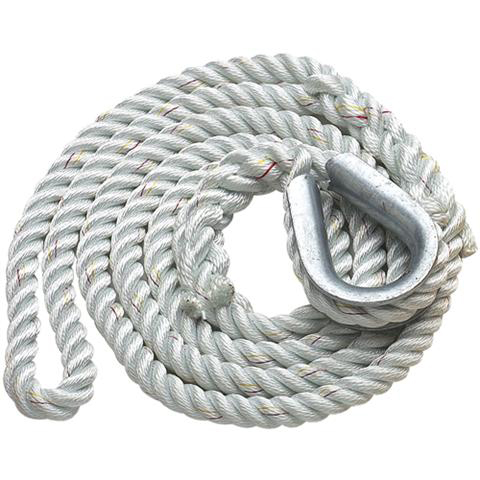
Why make your own dock lines? Because you can make them just the right length for your boat. The rule of thumb, by the way, is at least two-thirds of the length of your boat for bow and stern lines and at least the entire length of your boat for spring lines. You can make shorter ones one color and longer ones another so you can quickly tell them apart. Of course, I always forget which is which, but that’s a different issue. For the diameter of the line, the general rule is one-eighth inch for every eight feet of boat length. So, use 3/8-inch line for a 24-foot boat and 5/8-inch for a 40 footer. You can also make the end-loops any size you want. Pre-made dock lines come with a 12-inch diameter loop, but there are times when having a bigger loop is very handy.
So, all set? Now go to a marine store and buy good marine three-strand nylon rope (like New England or Samson). You don’t have to get the whole shebang all at once in case we have short winter or you really hate this. They keep it in stock. Maybe you could start with enough for just the two spring lines. Why use three-strand instead of double braid? The easy answer in this case is that three-strand is a lot easier to splice. Both are good. While double braid is a bit stronger, three-strand is stretch-ier, which reduces the strain on your deck hardware, and ultimately your boat, when it’s being yanked around by heavy weather or even boat wakes. There’s other stuff, but we don’t have room.
Why not just make the end loop with a bowline?
Ha ha, nice idea—not! Knots weaken the line; splices do not. Seriously, this is going to be easy, once you figure it out.
So, how do you make a splice? I’m not going to tell you, first because then you really would be confused and second, because I wouldn’t have room for the other fun things I want to suggest in this article about doing boaty things without the boat. Instead, I want you to find the YouTube video or knots app animation or boating-book drawings that make the most sense to you. Everybody’s brain logic works differently. Below are some of my recommended resources, but you’ll find more by doing a search online or at your local library. Chapman’s is pretty good. Send me a photo of your finished product.
Six Books to While Away the Winter
Now here’s an easy one: Read a book about the Chesapeake. There are some very good ones. Here are just a few. Most of these you will find at your library or bookstore. And online, of course.
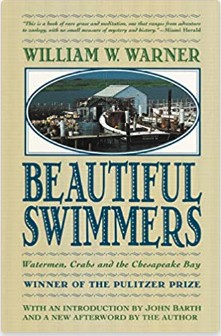
Beautiful Swimmers: Watermen, Crabs and the Chesapeake Bay by William Warner
Warner won a Pulitzer Prize for this 1994 book, which describes in more detail than you thought you needed to know about the life of the Bay’s blue crabs, the tides and currents that affect them, and the generations of watermen who have depended on them.
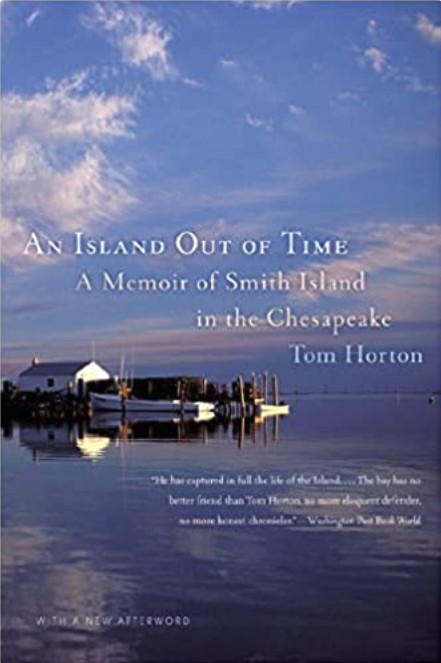
Island Out of Time: A Memoir of Smith Island in the Chesapeake by Tom Horton
Horton, a frequent contributor to this magazine, spent three years in the 1990s with his family on Smith Island, where he produced this moving portrait of a world apart.
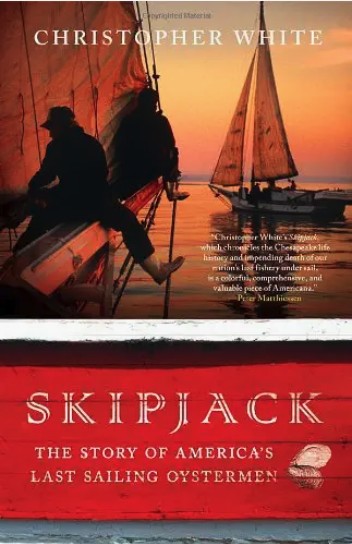
Skipjack: The Story of America’s Last Sailing Oystermen by Christopher White
There are few images more dear to those of us who live on the Bay than the sight of a skipjack under sail. It’s our boat. White writes about three of the remaining skipjack captains, who continue the very hard work of harvesting oysters with these classic Chesapeake craft.
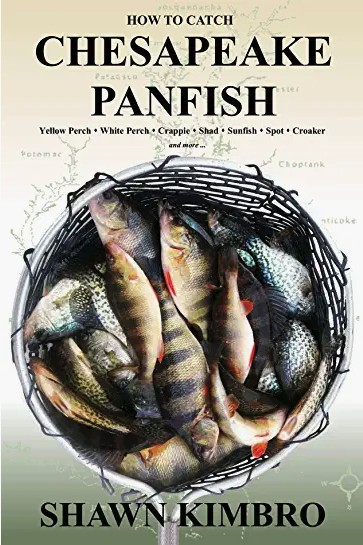
How to Catch Chesapeake Panfish by Shawn Kimbro
You’re right, I’m out of my depth here, but I do know that Kimbro is one of the most popular and respected writers about fishing generally and fishing on the Bay in particular. So, sure, it’s good.
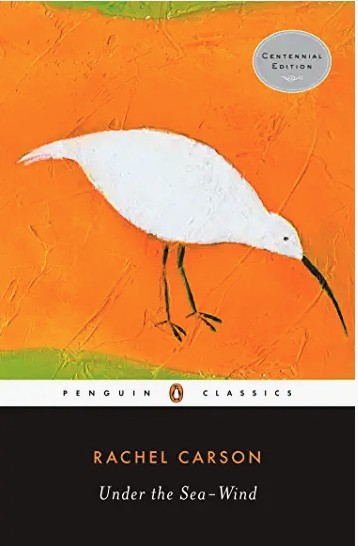
Under the Sea Wind by Rachel Carson
I include this here because Rachel Carson is a wonderful writer. She received her masters at Johns Hopkins and began her career working here on the Chesapeake for the U.S. Bureau of Fisheries (now the U.S. Bureau of Fish & Wildlife) and writing regular articles for the Baltimore Sun. This book was published as an offshoot of all of that. Besides, who knew that you could fall in love with eels?
Cruises, Mainly on the Bay of the Chesapeake by Robert and George Barrie
Finally, you probably won’t find this in stores or the library, but you will online. Cruises, Mainly on the Bay of the Chesapeake was published in the early years of the 20th century by Philadelphia brothers George and Robert Barrie. The two were probably the first of the Bay’s tourist cruisers. The sailing descriptions are sometimes terrific and the descriptions of favorite Bay places are irresistible. Also, I learned that farmers don’t always want to sell their chickens to passing boaters. Valuable information? No, just interesting.
Three Winter Land Yacht Cruises
Here’s the plan: Take a stroll along the waterfront, visit a museum you may have missed and then try out a new waterfront restaurant. It’s almost like boating. Not really, but it’ll still be fun. By the way, some of the Bay’s museums and waterfront restaurants close for the winter, so I’ve tried to keep to the ones that don’t. Still, not a bad idea to call ahead.
Havre de Grace
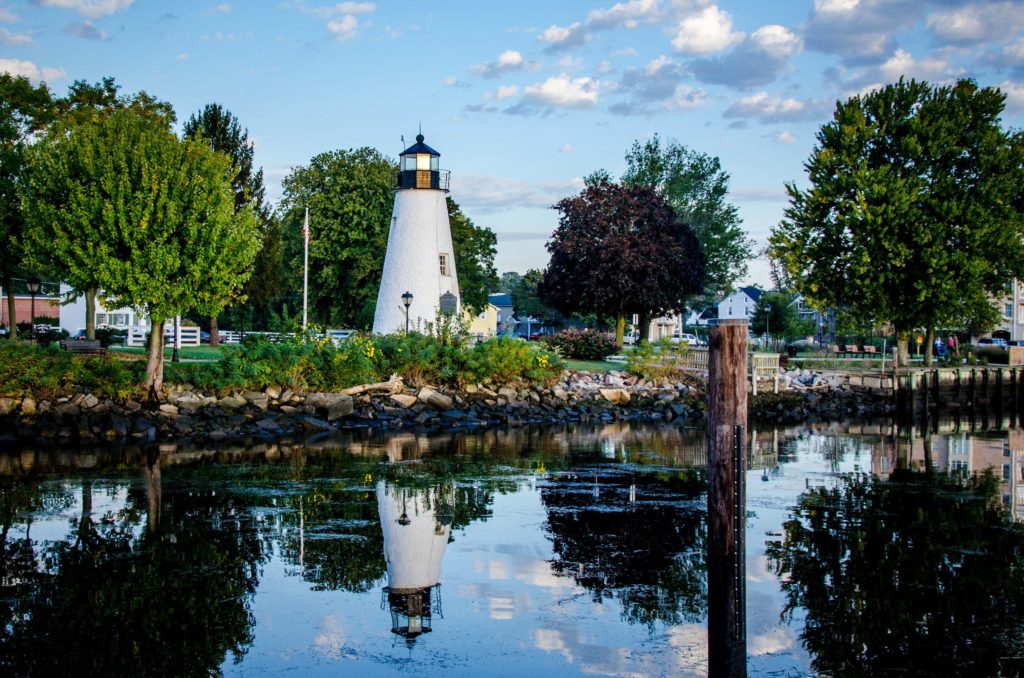
Here’s a nice easy land cruise, with a walk along the Havre de Grace Promenade. Start at Tydings Park at the south end of Havre de Grace and walk north on the boardwalk until you reach Concord Light. It’s not quite a mile. Along the way, be sure to stop at the Decoy Museum on Giles Street and the Maritime Museum on Lafayette Street.
The Concord Point Lighthouse is Maryland’s second oldest. Since this is winter, you’ll likely find it closed, but you can still admire the view, where the flow of the Susquehanna River meets that of the tidal Chesapeake. Now gather up your forces and continue up Concord Street to Girard. Turn west two blocks and reward yourself with a double dip of strawberry with a drizzle at Bomboy’s Homemade Ice Cream at Girard and Market streets. For a nice meal and a terrific view, walk or drive up to Tidewater Grille on Franklin Street.
Cambridge
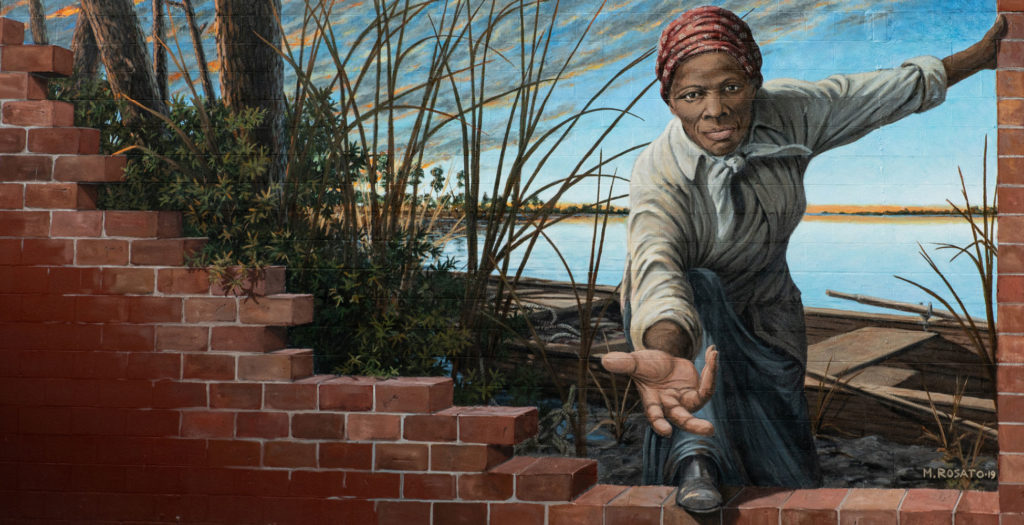
Golly, where to start? On one end of your trip or the other, you’ll want to stop at the Harriet Tubman Underground Railway National Historical Park, which is south of Cambridge on Golden Hill Road in Church Creek (not literally in the creek, of course). Then you’ll want to visit at least a few of the nearby stops along the Tubman Byway, like Bucktown General Store and Joseph Stewart’s Canal. The Byway is nearly 200 miles long, so perhaps you can save the rest for another visit.
Now drive north a few miles into Cambridge itself. Here you’ll want to see the Harriet Tubman mural and the visitor center. While you are there, take a good long walk through one of the Chesapeake’s most fascinating towns. You’ll find shops, lots of good restaurants, lovely architecture and a deep and abiding connection to the Bay.
If the Richardson Maritime Museum on High Street is open, by all means pay it a visit. It is dedicated to boatbuilder Jim Richardson and the many other craftsmen who have kept the area’s watermen afloat. You’ll also want to drop by Ruark Boatworks on the other side of Cambridge Creek on Hayward Street. And J.M. Clayton Seafood. Finally, stretch your legs before the trip home with a walk along the Choptank waterfront from Long Wharf Park to Great Marsh Park, just shy of a mile.
Newport News
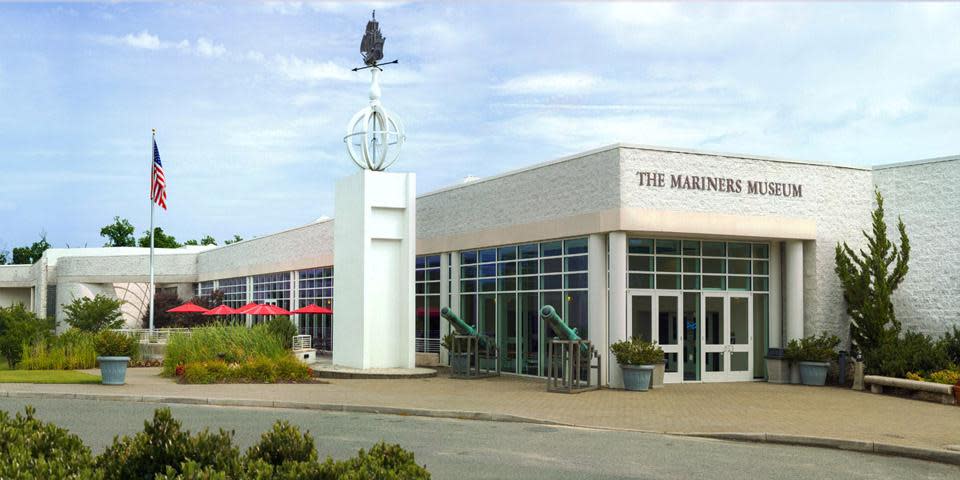
The wonderful Mariners Museum and Park and its adjacent Noland Trail make a perfect destination for a winter land-yacht expedition because they are nearly impossible to get to by boat. Start where you like because it’s all going to be fun. The museum entrance fee is only $1, and the entrance to the park and the 5-mile-long Noland Trail is free. Follow the trail—or part of it—around the shoreline of Mariner Lake. There are more than a dozen bridges along the way, nearly all interesting with stone lions’ heads and what not.
The museum itself is a wondrous mixture of displays, such as the America’s Cup exhibit, dramatic early maritime photography, a movie or two, the International Small Craft Center, the extraordinary miniature ships of August and Winifred Crabtree. And of course you’ll want to visit the definitely dazzling U.S.S. Monitor Center, which comes complete with a full-scale replica and a high-def Battle Theater with, as they put it, “unexpected loud and flashing lights.”
Whew, I just used a lot of modifiers! All deserved. Now for the equally important restaurant part. The museum has its own café, naturally, but it is, unnaturally, closed at the moment, so I suggest you motor five miles south to Crab Shack on the James. I haven’t eaten there in a couple of years, but I remember that it has great views and food. It is also within easy walking distance of Leeward Municipal Marina.
One Excellent Way to Out-Wait the Wait
And now for what is probably the best over-wintering solution of them all. You’ll need no equipment at all, not your car, not your computer, not even your reading glasses. All you’ll need are a few spare moments and a good memory. Okay, it’s not perfect. I could never put it as well as essayist and lifelong sailor E.B. White (yes, the Charlotte’s Web fellow) did in his piece “The Sea and the Wind That Blows.”
He begins: “Waking or sleeping, I dream of boats—usually of rather small boats under a light press of sail.” He goes on to explain that while other men, awaiting their turn at the barber shop, pick up a magazine to read, he sits down and picks up the thread of whichever of his past boating adventures he has begun earlier. “There is hardly a waiting room in the East that has not served as my cockpit,” he writes.
And that’s the idea. Simple and nearly perfect. As you go through the motions of winter, spin out your memories. Perhaps they are of a perfect early morning motor across a pancake-flat sea, down past Rock Hall, all the way into Solomons for dinner. Or maybe they are of a whooping-good broad reach from the Patapsco River down to Deltaville, shoved along by a 20-knot northerly and an impatient sea. What do I relive? Well, there’s that time I ran aground cutting the shoal too close south of Fernandina Beach. But there’s also that late afternoon sail with a friend in my venerable little Albin Vega 27, from the mouth of the Yeocomico River up to Breton Bay, holding her precariously wing and wing the whole way, and then ghosting her inside on a dying breeze to an anchorage off Protestant Point. Yes, that’s what I remember.
So, you see? If you do it right, boating’s not gone for the season, it’s just relocated.

